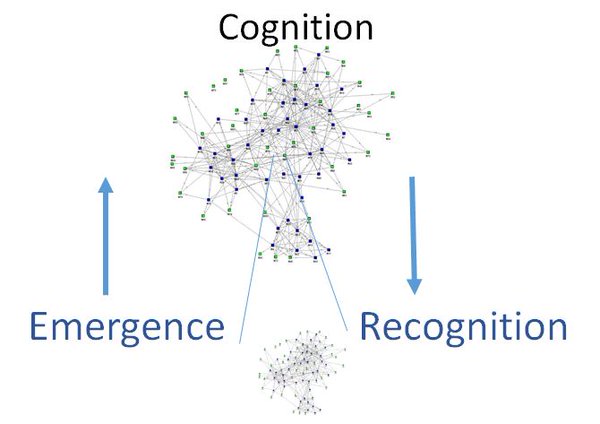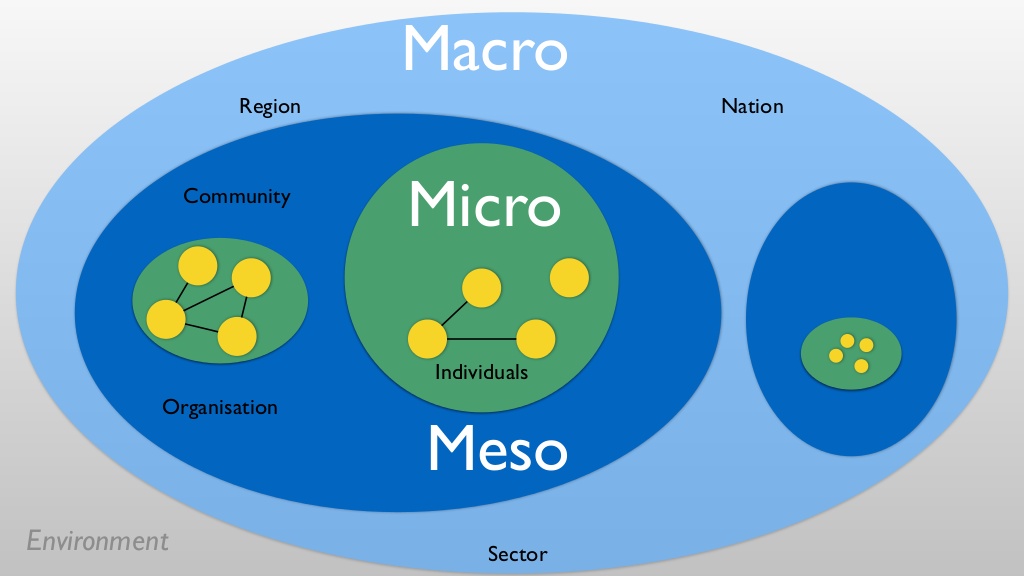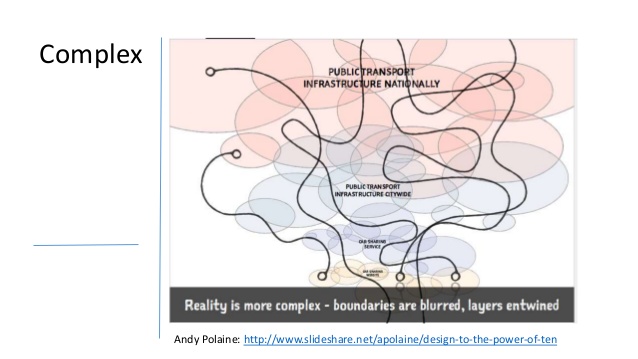This post is a change of pace for Littoraly. It begins to question the notion of Open Badges as scalable micro-credentials. How modular are they? Are they like lego blocks or are they fractal and chaotic? How far can we push the notion of modularity?
It’s part environmental scan and part thought experiment. I had wanted to explore this anyway, and the fact that #NRC01PL, Stephen Downes’ Personal Learning MOOC is now actively developing the notions of connectivism, emergence and recognition gives me a perfect opportunity.
The point of the post is the Draft Ecosystem Scaling Chart towards the bottom, but it takes me a while to set it up. You may want to cut to the chase and then loop back. But the video alone is worth the price of admission.
Nano, micro… let’s call the whole whole thing soft
Open Badges are often called micro-credentials and I think there are maybe three reasons for this:
- Avoiding the word “badge” when first introducing them to adult audiences who may label them as trivial
- Making them appear as less than a full credential to credentialing bodies and institutions concerned about devaluing their credentialing mojo
- Introducing the notion of modular credentials that can be sequenced, clustered and transformed into Milestone badges (also known as “meta-badges”: badges whose criteria involve the earning of tributary badges)
Today’s post begins to explore the boundaries of the third reason. It goes from nano through micro to giga. But Stephen argues that learning is not as neatly compartmentalized and nestable as many may think.
The MOOC Ecosystem
I’ve structured the post around Stephen Downes’ Fantastic Voyage exploration of the MOOC Ecosystem, introduced this week as part of the MOOC. It’s based on a talk he gave in Glasgow last year. Stephen zooms up and down from sub-microscopic to global perspectives, which I found quite inspiring:
Some Quick Notes about the MOOC Ecosystem Model
Stephen makes most of these points at the end, but I’ll get them out of the way now:
- Connectivism is based on the notion of neural networks.
Learning happens via “neuro-plasticity”, where connections are made and reinforced with activities. The value is in the patterns of active connections. - Zooming up increases complexity
What is perceived as a node at one level can also be a network of networks - Complexity: not just in number, but also interdependence, interactivity
It looks like chaos, but in fact it’s just the complex result of simple interactions at different levels.Each level has some degree of both independence and interdependence with peer, sub- and super-nodes and networks. - Cognition is bi-directional: Emergence <–>Recognition
I have some trouble following the distinction Stephen makes with his “video image of Richard Nixon” example, but here’s what I understand:- Emergence means patterns and sub-networks being perceived as objects
- Recognition means objects as perceived activating patterns of learning and behaviour
… I think.
- “Levels” are meshed and entwined
It’s not a neat set of concentric circles or hierarchical hub-spoke system; boundaries are blurred; layers intersect
(This makes me think of my dim notions of quantum mechanics.)
My (Very) Emergent Thoughts About Scaling Open Badges
Open Badges are becoming machine-readable nodes in trust networks
In moving from version 1 to version 1.1, Open Badges moved from JSON to JSON-LD. LD stands for Linked Data, which enables structured searches, not just crawling unstructured text. JSON-LD enables new descriptive properties to be added to Open Badges that can be mapped to external vocabularies and frameworks.
Geo-location is one example that has been implemented, various competency frameworks should come soon, third-party endorsement is in the works for v2.0, scheduled to come out later this year. In the meantime, according to a recent community call, the Open Badge Network project in Europe is working on an Open Badge extension for competency alignment using InLOC linked data, a JSON-LD framework designed by Jisc to support the sharing of learning information.
And if work with the W3C’s Verifiable Claims Working Group continues to go well, Open Badges will become “payment grade” verifiable claims, linked to owner identities rather than the online service that issued them.
There is a Drive Toward Open Badge Ecosystems
So, imagine if there were millions of Open Badges (there already are) whose various properties were discoverable by both humans and machines, whose aggregation and deconstruction could scale through algorithmic protocols, supplemented by other locally relevant, possibly unstructured information as necessary.
We already see some examples of different issuers and earners displaying badges to earn and badges earned, such as:
- Open Badge Passport Gallery
Public badges of earners are discoverable by issuer country, issuer name, badge name, and earner - Open Badge Academy
Displays badges that can be earned and badge assertions that have been endorsed by others online - LinkedIn
414m members, building a business graph of the world. Site searches by country can find badge issuers and badge assertions - (please comment to suggest others)
Then we have what Stephen would call Federated Search:
- Credmos Badge Discovery
Badge issuers provide feeds of the badges they have available to earn
My colleague Serge Ravet envisions trust networks growing up around Open Badges that could scale and he sees Open Personal Ledgers as helping make that possible:
The lack of “standardization” echoes fuzzy neural networks
Although initiatives such as Connecting Credentials and IMS Global’s Open Badge Extensions for Education (OBEE) are trying to find common ground for exchanging information about skills and learning, people are people and context is context. What’s “grit” for one community is “resilience” for another; what’s level 6 in one framework is level 4 in another; what’s relevant evidence in one context is perceived as opaque or infantile in another. Bits and pieces from different systems are borrowed, mashed up and transformed into new things.
This calls to mind Downes’ Two Dogmas of Educationism which Stephen introduces at 19m00s above (relabeling Quine’s Two Dogmas of Empiricism – intersting that Quine’s holism gets into quantum logic):
- Reductionism is False
- No Analytic-Synthetic Distinction
Every level is a complex network and functions on its own and has an impact on other peer sub and super networks:
I confess that I need to go through this philosophical stuff a few times more in order to really get what he’s on about. Basically, I take it to mean that things aren’t as simple and modular as many might suppose. A diversity of methods for learning via emergence and recognition will be required, which would include structured and non-structured information.
But I like the word recognition. That’s probably because I like the phrase Recognition of Learning…and not just prior learning, but also emergent learning.
Open Badges have the potential to support emergent learning and innovation ecosystems
Imagine you’re a global services company with half a million employees around the world, scattered over countries, regions, occupations and lines of business. How can you possibly foster learning and innovation across your operation?
One global services company I know is considering Open Badges. The example I was given was to imagine a small shop in Kuala Lumpur coming up with an innovation, whether it be a cool new method or piece of technology. One way for them to spread the innovations is to offer a badge offering to teach it. This advertises the innovation, provides a method for disseminating it along with a way to track its spread, as earners display their badge instances.
What you start to have here is an Internet of Badge Things. Which is a great segue to the real point of this post:
Draft Ecosystem Scaling Chart
This is a rough first attempt to track the potential scalability of Open Badges against Stephen’s levels of MOOCs and education in general.
I’m not totally happy with how I’ve matched levels, and I’m already thinking I may need to separate issuer/earner/consumer functions in future versions. But I hope readers will recognize enough here to to come up with a few emergent ideas of their own.
NB: Stephen starts at 2000, goes up to the planetary level, then back down to the sub-microscopic level. I’ve chosen to simplify by starting small and going big.
| Size | Stephen: Level of Complexity |
Don: Open Badges Applicability |
| 0.000002 | Bit Change in the neuron |
Learner in the moment |
| 0.00002 | Synapse 1-1 connection between neurons |
Learning activities (e.g. xAPI) Evidence artefacts “Bits of Trust” (see @szerge) |
| 0.0002 | Neural Network Your personal knowledge, based on connections ; neuroplasticity |
Learning Record Stores Curated collections of evidence Personal Open Ledger (see @szerge) |
| 0.002 | Touch Haptics |
Badge Issuers Badge Classes (what the badge is about) Badge design: gestalt, semiotics |
| 0.02 | Language and Text Words, images, patterns that have meaning |
Badge criteria, evidence, other fields in a badge class Badge image |
| 0.2 | Interfaces Connection between your hand or eye and an object device or tool |
Assessments, badge applications |
| 2 | You (and a Friend) Personal Learning Network: you connecting to others, your social media, resources Don: my arbitrary median level |
Single badges Formative badges Badge Assertions (baked badges awarded to individuals) |
| 20 | Linked Data Personal Graph Don: I have trouble separating this level from above and below |
Badge collections Summative badges Milestone Badges |
| 200 | Dunbar’s number (really 150)Level where:
Don: beyond which a “Learning Tribe” becomes a “Learning Movement” |
Badge pathways – prescriptive or descriptive Badge Passports Nested Milestone Badges Badge systems |
| 2,000 | Size of the first MOOC “Small town”; network (don’t know everybody) Synchronous event – webinar Don: “Online town hall” |
Badge gallery, badge group Self-awarded badges Shared badge systems “Chains of Trust” (@szerge) |
| 20,000 | Series of first MOOCs Don: “Small town circuit” Community of Practice Exchange comments, resources, etc. |
“After market” badge metadata Communities of diverse badges Communities around specific badges and badge types (badges as hubs and rallying points) Badges as knowledge objects |
| 200,000 | The first big xMOOC: Artificial Intelligence Learning analytics The quantified self Data points to provide learners with a dashboard |
Indexed badge systems as knowledge patterns (Credmos) |
| 2,000,000 | The Early MOOCisphere Collections and Systems Learning record stores, learning results to generate an interactive reactive, even predictive system |
Badge regions Federated Backpacks Badge repositories (Badgepedias, a “smart” Backpack) “Networks of Trust” (@szerge) |
| 20,000,000 | National MOOC Strategy National Repositories Open online learning |
Badge nations Googling a badge (W3C) |
| 200,000,000 | Overall impact of MOOC on culture and pedagogy Open Resource Network e.g. Directory of Open Access Journals |
Badge cultures, badge economies Multi-country movementsBadgechains, aggregated ledgers OR: |
| 2,000,000,000 | MOOC world Knowledge becomes a network |
“Badge planet”, “Internet of Badge Things”Badges as learning agents |
Final thoughts
I don’t think I’ve nailed this yet; this is me thinking or learning out loud. I’m still pondering how connectivism affects the notion of badge scalability.
For one thing, I’m still struggling with constructivist modularity vs. connectivist emergence and recognition. As an example, trades have skill sets that are in National Occupational Analyses (NOAs) such as this NOA for Cooks. It’s pretty analytical, but wouldn’t you want to feel confident that you had covered the bases? But maybe it doesn’t cover all the bases, because it’s not holistic enough. Is there a better way of doing this? I do know that my chef friend says that a good test of a cook is how well he/she slices a tomato – that combines several pieces of skill and knowledge into one seemingly simple capability. I think I would fail, but I blame my tools – oops, sharpening knives is one of the skills.
Open Badges do a useful job of filling gaps in our current education and training systems. And I think they can provide useful data points in holistic recognition recognition systems, which is a point I made in my last post.
But all in all, I’m feeling pleased about having joined this mini-MOOC, if only as a way to test my evolving ideas about how Open Badges can recognize learning.




Pingback: Open Badges: Connectors for Open Learning | Littoraly